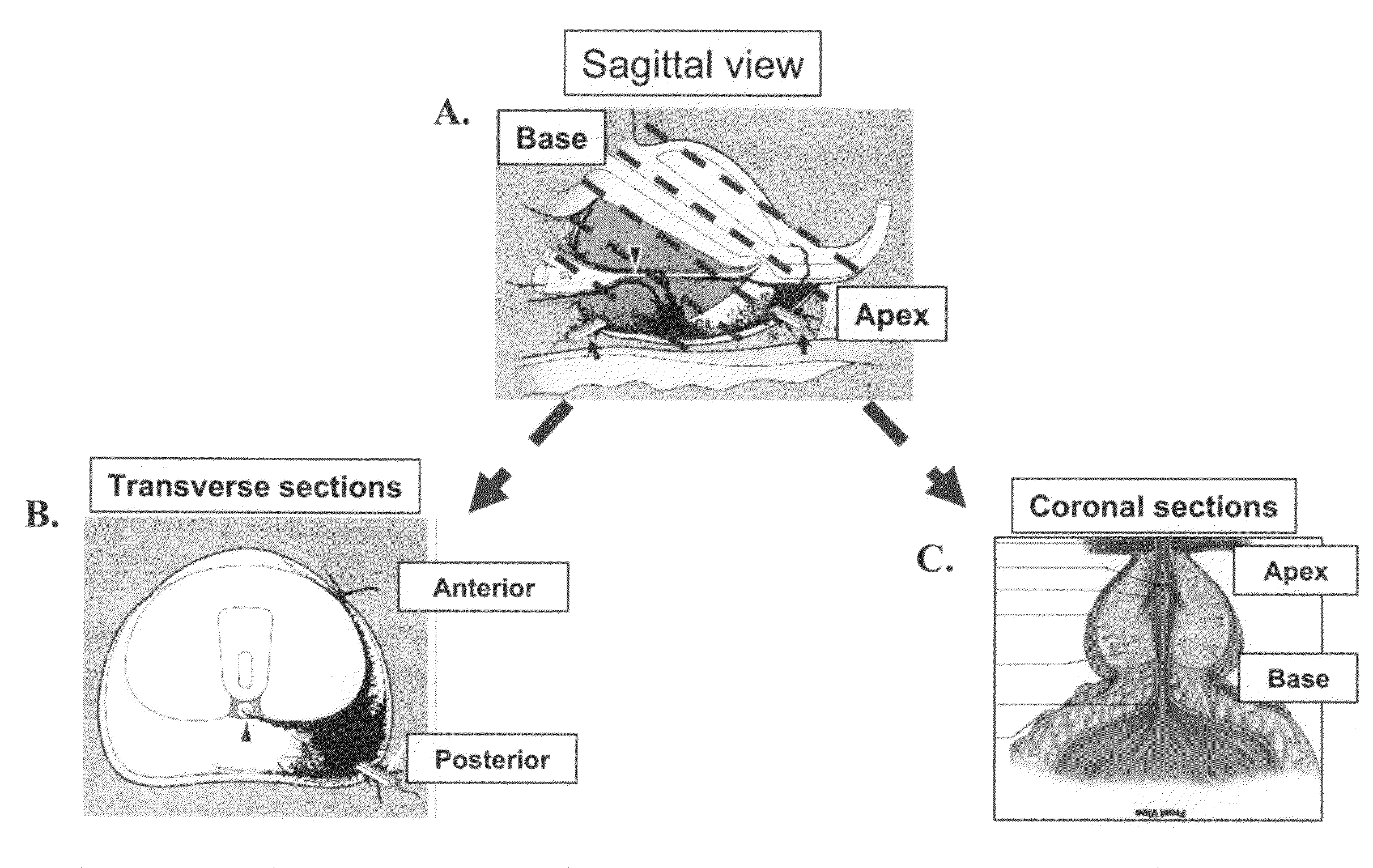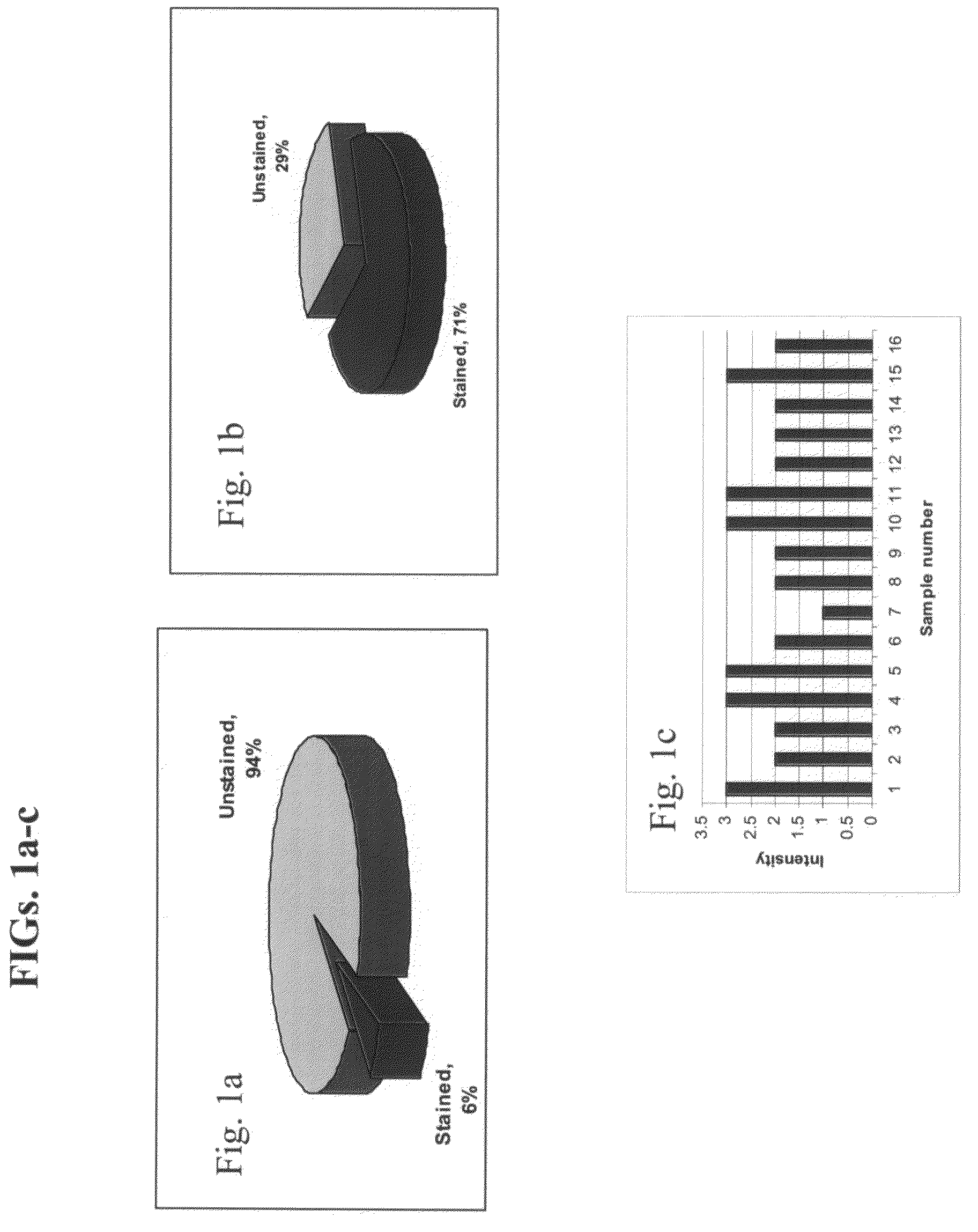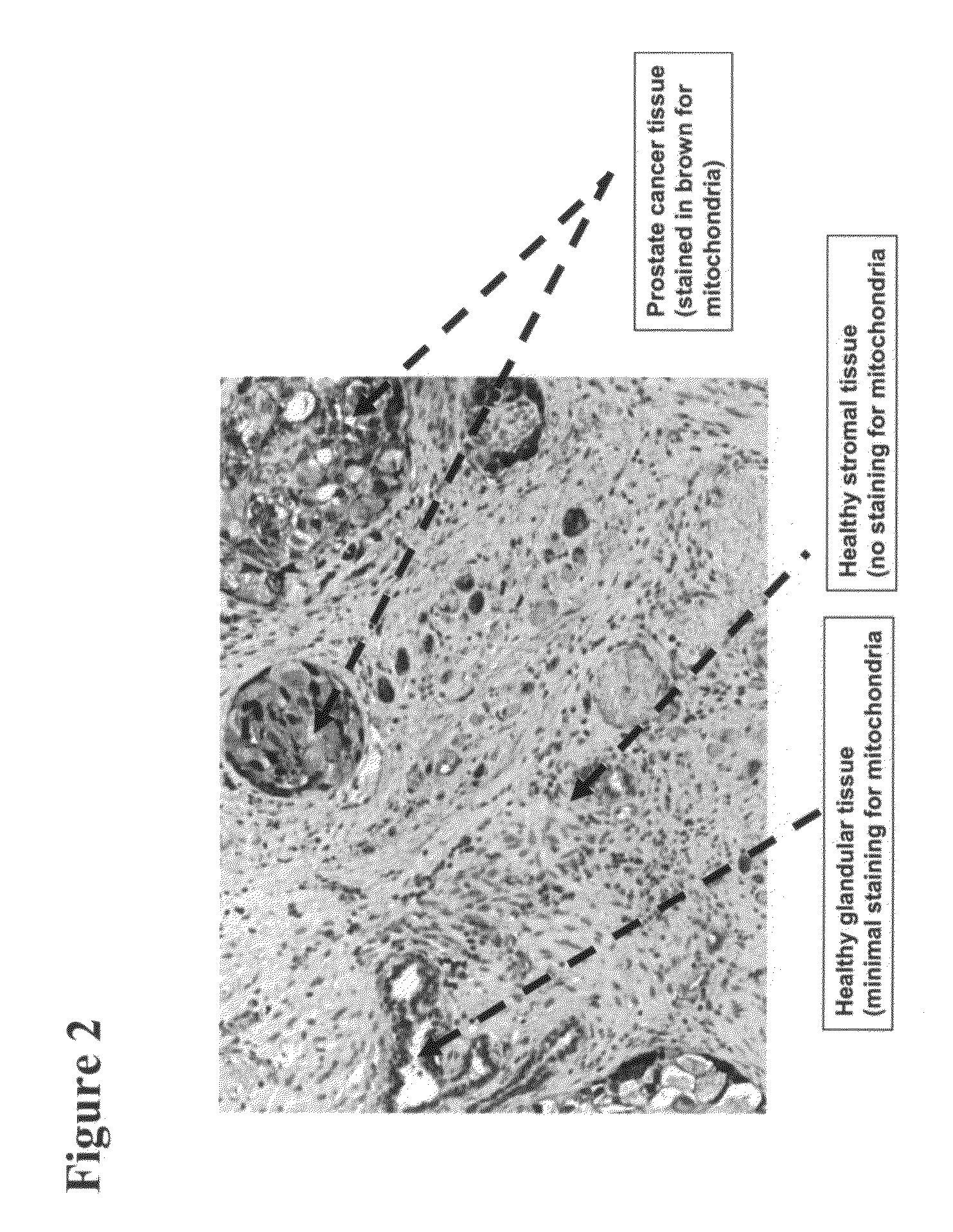Methods of Detecting Prostate Cancer
a prostate cancer and prostate cancer technology, applied in the field of prostate cancer detection methods, can solve the problems of incontinence and impotence, adverse side effects, and tumors that have grown beyond the prostate edge cannot be cured with radiation or surgery, and the risks of prostatectomy include incontinence and impoten
- Summary
- Abstract
- Description
- Claims
- Application Information
AI Technical Summary
Benefits of technology
Problems solved by technology
Method used
Image
Examples
example 1
Materials and Experimental Methods
[0214]Expression of a protein component of human mitochondria was analyzed immunohistochemically by the labelled streptavidin / biotin method on formalin-fixed, paraffin embedded tissues. Sections of prostate tissue were dewaxed in xylene, and rehydrated through descending graded alcohols and rinsed in distilled water. Sections were then incubated with primary antibodies. Antigen retrieval was carried out using a pressure cooker and EDTA buffer (pH=8) 110° C., for 6 min. Following blocking of endogenous peroxidase activity with 1% H2O2 (30 min) and non-specific antibody binding with 1% bovine albumin in NaCl / Pi for 30 min, sections were incubated with primary antibodies.
[0215]Incubation was carried out with anti-mitochondria monoclonal antibody (BioGenex) in 1:80 dilutions for 1 h incubation at room temperature. Sections were subsequently incubated with prediluted biotinylated link antibody (DAKO LSAB 2 Kit, Dako Corp. CA, U.S.A.) for 30 min followed ...
example 2
Materials and Experimental Methods
[0218]Twelve prostate cancer patients were intravenously administered with 25mCi Tc99Sestamibi 1-2 hours prior to prostate excision. Intact prostates were excised using surgical procedures (Radical Retro pubic Prostatectomy, Radical Cystectomy or Open Prostatectomy)—illustrated in FIG. 3. The intact prostate was imaged by SPECT using a standard dual head gamma camera (millennium, GE) 6° angular step and 40 sec / step. Imaging results were reviewed using both transaxial (FIGS. 4I-N and FIGS. 5C-D) and coronal views (FIGS. 4O-T and FIG. 5E). The nuclear images were processed automatically. The designated green lines seen in FIGS. 4I-M and 4O-R and 5C and 5E were produced following an automatic search for maximal intensity voxel. Contours were determined at 90% maximal intensity. Following imaging, prostate tissue was sliced transversely from bladder neck (base) to apex. Whole mount histopathology was carried out as described in Example 1.
Experimental Re...
PUM
| Property | Measurement | Unit |
|---|---|---|
| Magnetic field | aaaaa | aaaaa |
| Size | aaaaa | aaaaa |
| Volume | aaaaa | aaaaa |
Abstract
Description
Claims
Application Information
 Login to View More
Login to View More - R&D
- Intellectual Property
- Life Sciences
- Materials
- Tech Scout
- Unparalleled Data Quality
- Higher Quality Content
- 60% Fewer Hallucinations
Browse by: Latest US Patents, China's latest patents, Technical Efficacy Thesaurus, Application Domain, Technology Topic, Popular Technical Reports.
© 2025 PatSnap. All rights reserved.Legal|Privacy policy|Modern Slavery Act Transparency Statement|Sitemap|About US| Contact US: help@patsnap.com



